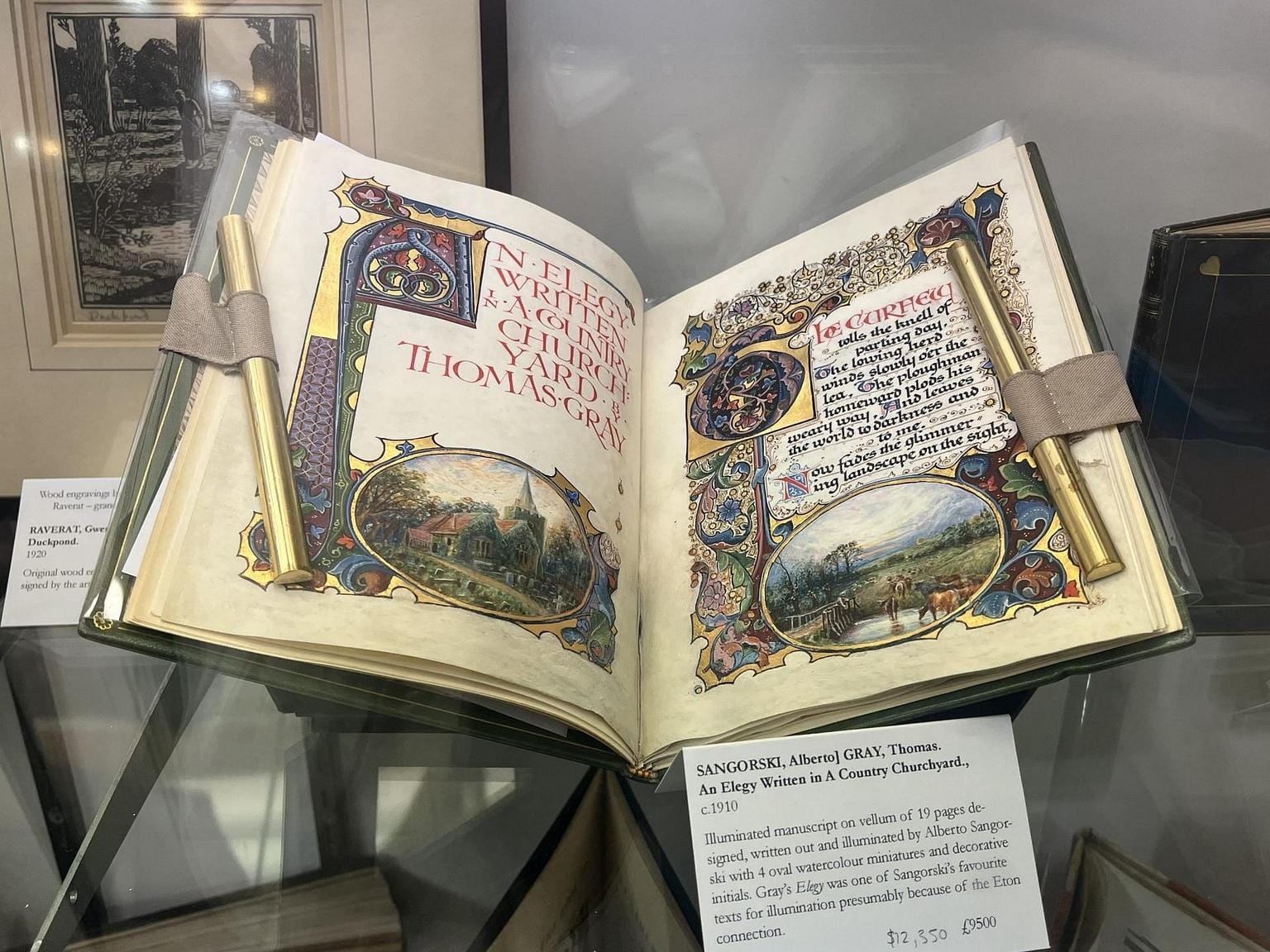RARE BOOKS LA
Pasadena Convention Center
Pasadena
Feb. 4, 2024
If you’ve ever told someone it was your New Year’s resolution to read more books, know that I have already lit a candle for you. Setting a goal and stacking your shelves with new titles can feel exhilarating — until you realize that even if you plowed through 10 pages per minute, you wouldn’t finish your list by December. With bloodshot eyes, you ruminate: should you work your way through the greats, formulating a syllabus that allows three days tops for War and Peace, or keep abreast of the latest releases from hot indie presses, even requesting an ARC here and there to stay ahead of the calendar? Rare Books LA suggests an alternative approach: reject both the canon and Publishers Weekly to embrace the deep cuts.
Thunder rumbled through the Pasadena sky as I approached the Convention Center, hoping to fight off the rainy-day blues with some new paperbacks. The exhibition hall was full of books I didn’t recognize. Recalling days of burrowing through my school library, I felt at home. I’m sure Mechele Burry, the event organizer who greeted me, did too. After welcoming me with a program and a rose (“For the Love of Books” was this year’s theme), she introduced me to the rest of the Rare Books team, which included her wife, her sister, her sister’s husband (with in-laws), her sister’s in-laws, and their mother. Truly a family affair.
Drawn like a moth to a brightly lit bookcase, I wondered if I might take anything home — but I was shocked to see price tags in the thousands. As I chatted with exhibitors, I began to understand what made certain books so valuable. Some, such as a painfully adorable copy of Margaret Wise Brown’s 1946 children’s book Little Fur Family (the bear on the cover had a fuzzy tummy à la Pat the Bunny), had been autographed by long-deceased authors. Others were out-of-print first editions, such as a copy of Ian Fleming’s You Only Live Twice (1964) that looked more like a book of fables than a Bond tale, with its gorgeous watercolor of a frog crushing a dragonfly. Still others were one of a kind, such as an illuminated manuscript decorated with intricately painted horses. Although name recognition and clout meant something, they weren’t the only metrics — books were revered as artifacts and art objects, with sellers and attendees demonstrating their care for both context and craft.
While it was humbling to bear witness to a $10,000 book, I was relieved to see a variety of options that wouldn’t break the bank. One stall peddled pulp novels for a few bucks a pop. Another sold issues of Interview from the 1980s, when the magazine’s cover stars were painted rather than photographed. “There is something for everyone,” the convention’s website proclaimed; I had to agree. As I continued talking with booksellers, I also began to share their appreciation for the publishing process. When I squealed over a copy of a lesser-known Madeleine L’Engle book, the vendor opened an envelope included with the volume (purchased at L’Engle’s estate sale), revealing rudimentary sketches that had served as the basis for the illustrations. Later, I dug through some pamphlets on the occult and learned about the small presses created to platform spiritually heterodox authors. I was most moved by a treasure trove of poems in a bin of ephemera, bound with cowhide lace and transcribed in pen. Could it be … an early zine? Indeed, it was — designed by a man named King Zany, who started out as a Hollywood star in the 1920s and later reinvented himself as a DIY author. How lovely to encounter yesteryear’s publishing pioneers — people whose names are spoken all too infrequently.
I emerged from the grounds with two new books — a collection of short stories from the ’40s and a noir about a rec center chairman with dastardly plans. I didn’t care how many reviews they had on Goodreads — if they were on Goodreads at all.






